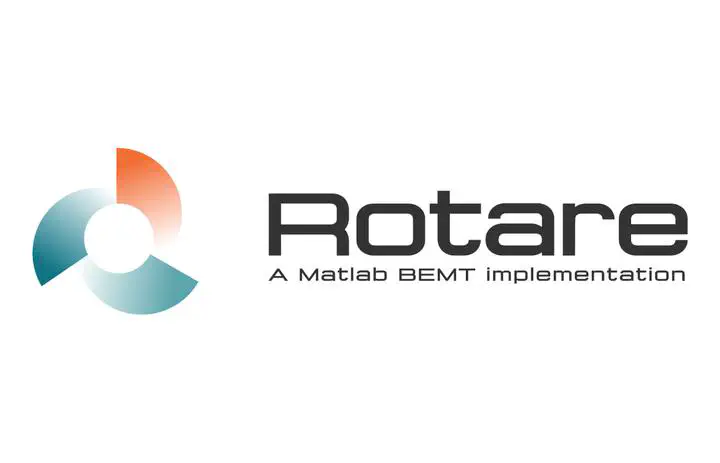Rotare

Rotare: A Matlab Implementation of BEMT
Rotare is an advanced, open-source MATLAB application created for the analysis and design of a broad spectrum of rotors, with a special emphasis on its capability to model both single and coaxial configurations. It caters to a wide array of rotor configurations, including helicopter main or tail rotors, aircraft propellers, and wind turbines, making it versatile for different engineering projects.
Initially created for academic purposes at the University of Liège (Belgium) during my PhD, Rotare has since expanded its functionalities to include a variety of solvers and methodologies, along with enhanced support for complex geometries.
Key Features
- Modeling Capabilities: Rotare allows for the detailed modeling of both single and coaxial rotors, with the ability to adjust airfoil characteristics, twist, and taper according to specific design requirements.
- Model Enhancements: It integrates several advanced features such as corrections for tip and hub losses, compressibility effects, tip relief, and spinner influences, enriching the analysis with more accurate real-world considerations.
- Solver Variety: Offering multiple solvers, Rotare enables users to approach BEMT equations from different angles, facilitating a deeper understanding of the theory and its applications.
By bridging academic research and practical application, Rotare serves as a valuable resource for both educators and professionals in the field of rotor dynamics and design.
Project roadmap
| Status | Item |
|---|---|
| Done | Basic implementation |
| Done | Open-source release of the code |
| Done | Coaxial rotors implementation |
| In progress | Validation with literature and experiments |
| March 2024 | Comparison with UVLM |
Links
- Code repository
- Documentation (incomplete)